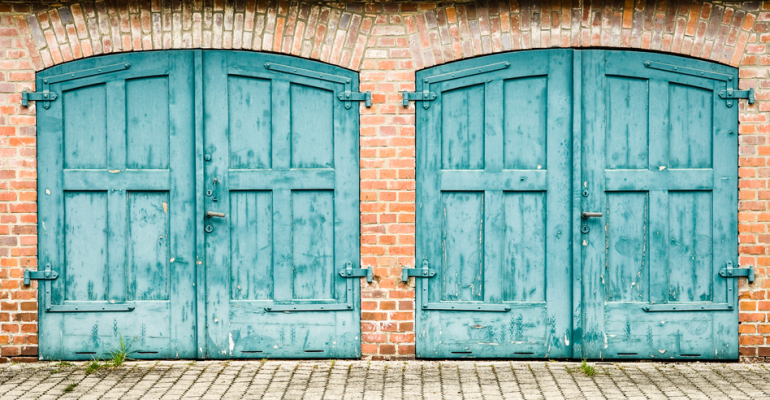The History of Garages

Do you know the history of the modern day garage dates back more than 100 years? The term garage itself was derived from the French word “garer” which means “to shelter.” The term fits the purpose of what we use our garage for every day whether we shelter our car or our extra stuff that doesn’t fit in the house. Keep reading to learn about how garages were first built and how they’ve gotten to the point of where they are today.
The Evolution of the Carriage House
Carriage houses were buildings that originally housed the carriage, horses, and related modes of transportation. So naturally once automobiles started gaining in popularity, these structures were repurposed into garages.
The new “horseless carriage” took the country and the world by full force and businesses saw an opportunity and a demand developing. The famous Sears Roebuck & Company capitalized on this new trend and introduced a portable garage people could order starting back in 1908. This was a very popular item for those who didn’t have a carriage house already on their property.
Cars, Cars Everywhere
When the federal government passed the Federal Road Act of 1916 and the Federal Highway Act of 1921, it became clear that cars were here to stay. Then when Henry Ford introduced his famous car affordable to the masses, there was no turning back. Now a motor and four wheels was available to every American at an affordable price. But then the problem of storing them became clear.
When people began constructing new garages to house their vehicles, they started by modeling them after the traditional carriage houses of the past. But the necessity of innovation quickly pushed the envelope. The overhead garage door was introduced in 1921 and just 5 years later the revolutionary automatic garage door opener became available. What started as a novelty quickly became the standard as the public demanded a better and more functional garage door.
Does It Have a Garage?
The need for garages across the United States was palpable. As early as 1925, real estate agents reported that prospective buyers were quick to ask if the home included a garage for their vehicle. And if it didn’t this could cost the deal. By 1941, architects and home designers were creating new home designs which included attached garages that gave the residents direct access to their vehicle. No longer did people need to walk outside to get to their garage.
As the economy boomed after World War II, Americans wanted bigger and better cars.
And as they bought these vehicles, their need for a large garage naturally grew too. By 1960, the garage had expanded to the point that it included a whopping 45 percent of the square footage of the entire average American household.
The New Way Inside
In our current American society, we have more than 82 million homes that include a garage while 79 percent of all home include at least a single-car garage. And as families start to have more cars, people are continuing to expand the size of their garages. About 17 percent of new single-family homes have a three-car garage.
Vital to the functioning of daily life, nearly three quarters of homeowners use their garage as the primary entry way into their home. The front door has effectively been replaced. But along with increase of garage sizes, the role of the garage door has also changed over time.
A Space of Creativity
Although spurned on by the growing need of cars in America, about 85 percent of homeowners use their garage for something else other than sheltering their vehicle. Most people use it for extra storage or have turned it into a “man cave” or other such relaxing room. But the garage has also been home to some of the biggest entrepreneurs and inventors. Google, Apple Computers, Nike and a lot more got their start from inside the humble garage.
Perhaps an even more famous use of the garage is for music. There have been countless garage bands that have gone from humble beginnings to rock stardom thanks to the garage. For example, Nirvana, The Beatles, and more. With so much amazing innovation behind the automatic garage door, where will the history of garages lead next?
What began at the turn of the century as a practical way to house the family vehicle, has evolved into a movement that has given us some of the greatest music and innovations in generations. The garage is here to stay. And with such an exciting history, the future of garages will be a journey worth following.